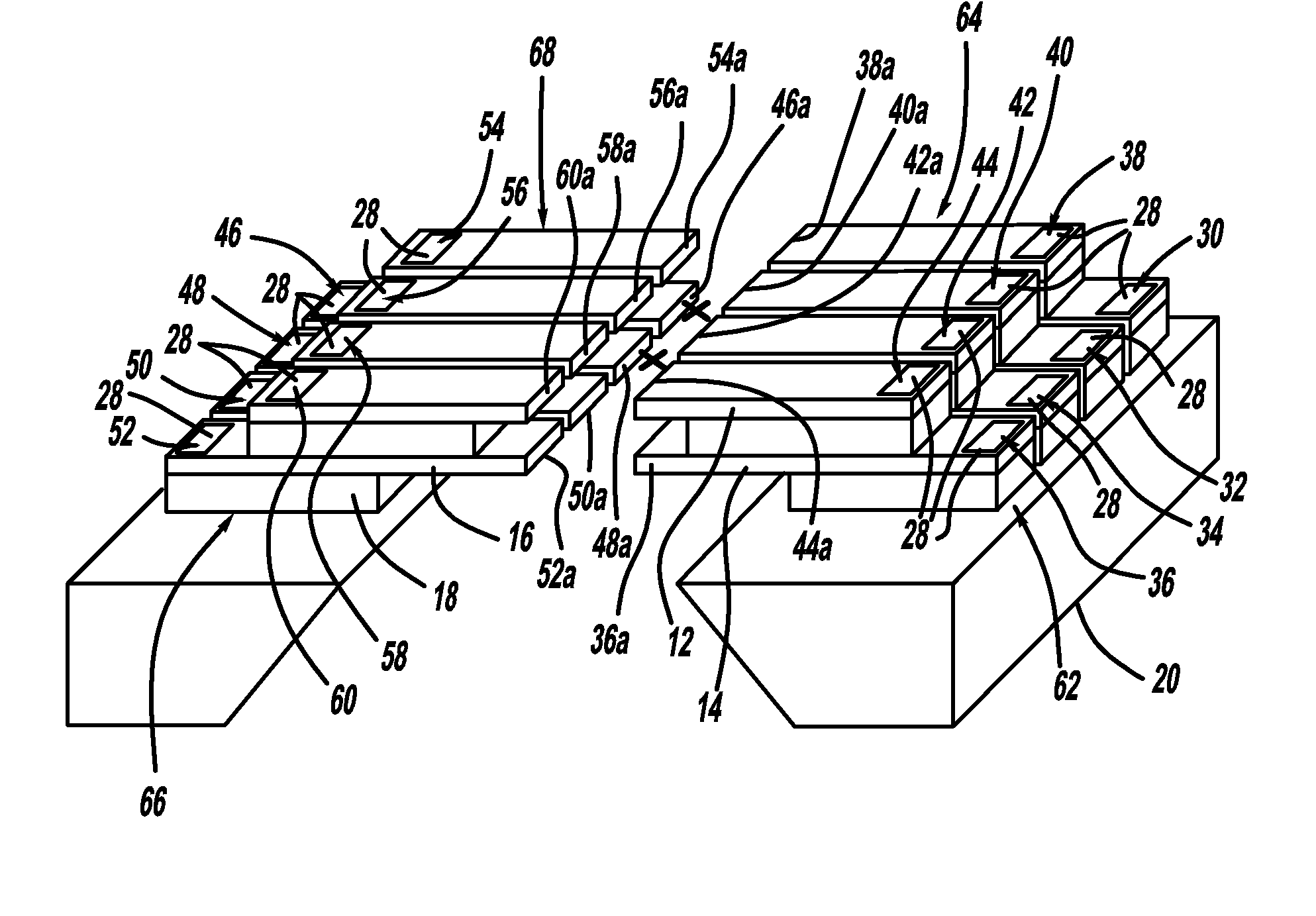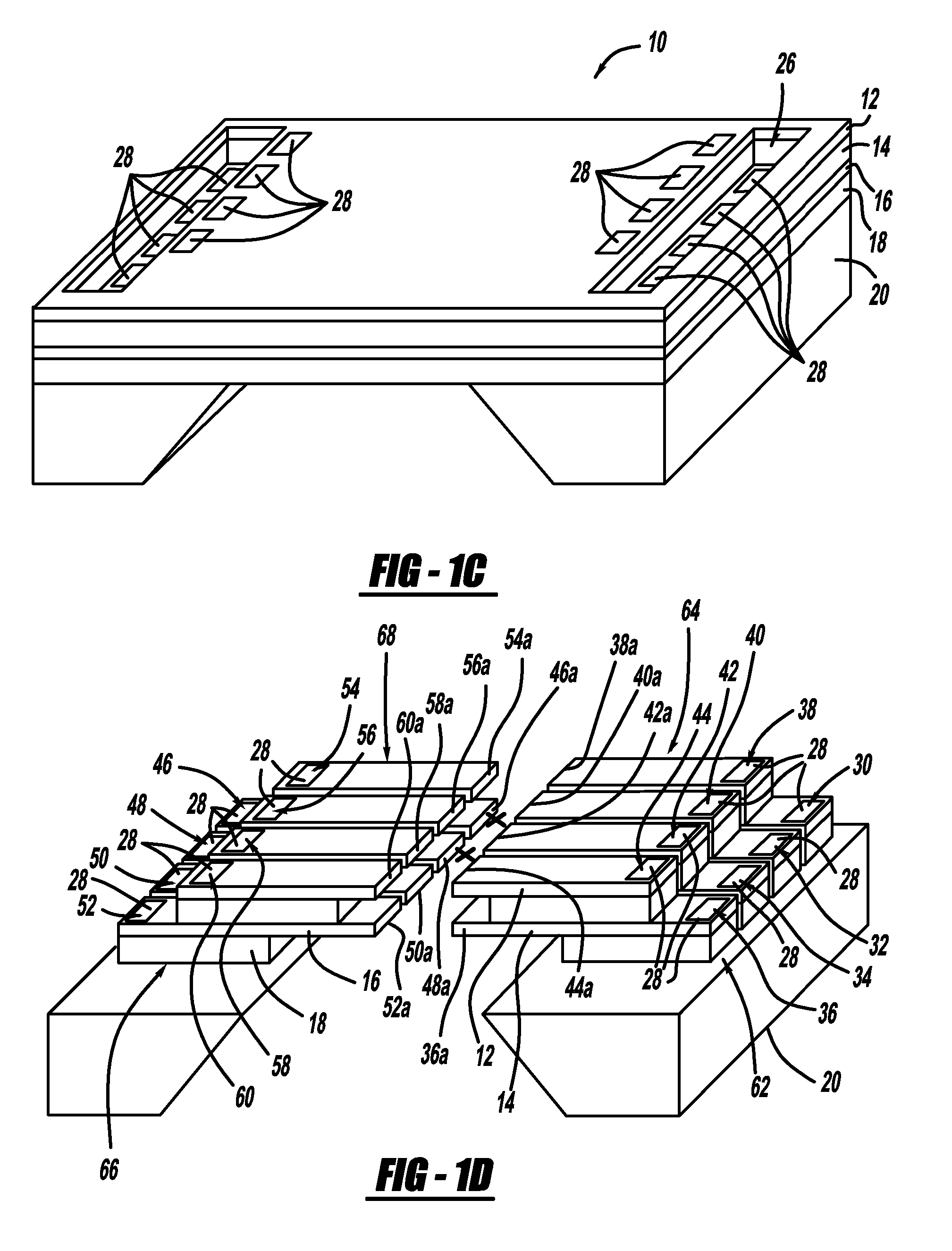Ion trap in a semiconductor chip
a technology of semiconductor chips and traps, applied in the field of ion traps, can solve the problems of limiting the overall use and effectiveness of gates in this impulsive regime (e.g., faster than 1 microsecond) and its own challenges
- Summary
- Abstract
- Description
- Claims
- Application Information
AI Technical Summary
Benefits of technology
Problems solved by technology
Method used
Image
Examples
Embodiment Construction
[0050]The following description of the preferred embodiment(s) is merely exemplary in nature and is in no way intended to limit the invention, or uses.
[0051]A micrometer-scale ion trap, fabricated on a monolithic chip using semiconductor micro-electromechanical systems (MEMS) technology, is provided. The present invention confines, allows for laser cooling, laser cools, and measures heating of a single 111Cd+ ion in an integrated radiofrequency trap etched from a doped gallium arsenide (GaAs) heterostructure. Compared with “chip traps” for confining neutral atoms, ion traps of the present invention with similar dimensions and power dissipation offer much higher confinement forces and allow unparalleled control at the single-atom level.
[0052]More specifically, the present invention confines single 111Cd+ qubit ions in a radiofrequency linear ion trap on a semiconductor chip by applying a combination of static and oscillating electric potentials to integrated electrodes. By way of a n...
PUM
| Property | Measurement | Unit |
|---|---|---|
| drive frequency | aaaaa | aaaaa |
| length | aaaaa | aaaaa |
| drive frequency | aaaaa | aaaaa |
Abstract
Description
Claims
Application Information
 Login to View More
Login to View More - R&D
- Intellectual Property
- Life Sciences
- Materials
- Tech Scout
- Unparalleled Data Quality
- Higher Quality Content
- 60% Fewer Hallucinations
Browse by: Latest US Patents, China's latest patents, Technical Efficacy Thesaurus, Application Domain, Technology Topic, Popular Technical Reports.
© 2025 PatSnap. All rights reserved.Legal|Privacy policy|Modern Slavery Act Transparency Statement|Sitemap|About US| Contact US: help@patsnap.com



